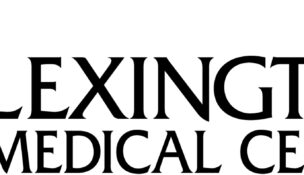Popularity of pet insurance grows
Staff //March 14, 2018//
Imagine having a loved one need emergency surgery but wondering if you could afford the proper care.
Insurance provides protection against that frightening possibility, but for nearly 180 million pet owners, that protection is often overlooked. Without insurance, many are left debating whether certain procedures are worth the accompanying bill.
Pet insurance is quickly becoming one of the most sought-after policies at a number of insurance carriers, and with good reason. A report from American Pet Products showed owners spent nearly $16 billion on veterinary care in the 2016.
“More people are getting (pet insurance) as they become more aware,” said Ryan Dover, veterinarian at Grace Animal Hospital in Lexington. “It’s a potential way to avoid a major burden due to unforeseen emergencies.”
Dover called pet insurance one of the hottest products in his field, and he said he encourages interested clients to search for a policy.
Scott Liles, chief pet insurance officer with Nationwide, said pet insurance policies act the same as ones for humans, covering accident and injury. “Some of the newest coverages include wellness and prevention, including regular visits,” he said.
Many insurance companies cover cats and dogs, but Nationwide also covers birds, reptiles and other exotic animals.
Nationwide provides a range of quotes for dogs and cats in South Carolina. Medical plans for a 1-year-old Labrador retriever, for example, start a $27 a month, while plans for a 1-year-old American shorthair cat start at $15 a month.
Liles said growth in pet insurance policies has ramped up during the last decade, with 20% growth per year in the United States. Even with the steady increase, Liles said the market has room to keep growing, as only 2% of pets in the U.S. currently have insurance policies.
That number rises to 20-45% in the United Kingdom and Scandinavian countries.
Dover said he’s seen the bond between humans and their pets grow. That means pet owners are willing to do more for what is essentially another member of the family.
“I try to educate each owner to let them know there are policies out there that can help against a potentially life-threating situation,” he said.
Liles agrees, saying the role pets play in the household has increased. “They are truly part a member of the family, rather than just a possession,” he said.
The potential of longer pet life spans is also fueling the insurance trend, Liles said, as is the practitioner choice that accompanies most policies.
“With medical advances in the veterinary field, people are willing to spend more on their pets,” Liles said. “Most policy owners also like the fact they can see the doctor of their choosing and not pick from a network.”
Many employers have started to offer pet insurance to their workers to help with recruitment and retainment of employees attached to their animals.
“Employers love it and see it as a cache,” Liles said. “Employees have a certain attitude toward their pets, and employers are recognizing it by adding promotions like Take Your Pet to Work Day. It’s a benefit for millennials who are looking for benefits. They have delayed marriage and families and see their pets as babies.”
With a low base and small market, Liles says there is quite a bit of headroom before the pet insurance industry begins to fade. “I think it will continue to double for the next five to eight years,” he said.
Liles and Dover agree that it is best to get coverage for a pet when the animal is young. Nationwide does not cover pre-existing conditions.
This story first appeared in the March 12 print edition of the Columbia Regional Business Report.
T















